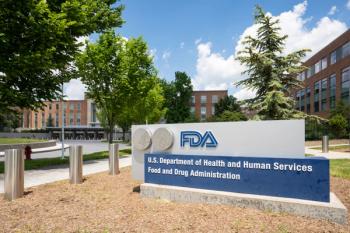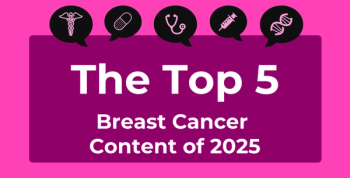
Study: Oxidative Stress Underlies Asthma Risk Associated With Air Pollutant Exposure
Researchers outlined 3 mechanisms in which PM2.5 induces asthma, all of which they say are tied to oxidative stress balance.
An exploration of how a certain air pollutant induces asthma may open the door to new treatment approaches for the condition.
In a new study
“PM2.5 has become one of the most significant causes of asthma. Epidemiological analyses have demonstrated an association between short- and long-term exposures to PM2.5 and increased emergency room visits and hospital admissions for asthma exacerbation,” described the researchers. “A previous research demonstrated that the risk of a child’s hospital admission or [emergency department] visit was strongly associated with the short-term increase in PM2.5 concentration, with a 4.8% increase for every 10μg/m3.”
In their current paper, the researchers outlined 3 mechanisms in which PM2.5 induces asthma, all of which they say are tied to oxidative stress balance, a key player in the disease. Based on this, the group emphasized the consideration of oxidative stress in the treatment of asthma, noting that traditional Chinese medicine options that mimic the effect of antioxidants may have potential.
According to the group, PM2.5 is a significant risk factor for type 2 (T2) inflammation in the airway. Through biological and organic components with REDOX activity, PM2.5 is able to induce oxidative stress, impair the mucosal barrier in the airway, and evoke T2 inflammatory responses, such as fungi and viruses. Findings from previous research have revealed increases in reactive oxygen species accumulation among lung tissues of mice who were exposed to the PM2.5.
The pollutant can also create airway hyperresponsiveness through activation of different signaling pathways, including the Nrf2-keap1-ARE signaling pathway, the NF-κB signaling pathway, the MAPK signaling pathway, and the PI3K/Akt signaling pathway. By activating these pathways, PM2.5 elicits the release of proinflammatory cytokines and inflammatory cells into the airway.
“Through the production of antioxidant enzymes and cellular protective proteins, the Nrf2 signaling pathway plays an important role in preventing airway inflammation and oxidative damage caused by PM2.5,” wrote the researchers. “Exposure to PM2.5 causes elevated concentrations of calcium ions in airway epithelial cells. Calcium is released from the endoplasmic reticulum and regulates various signal transduction pathways, including the activation and phosphorylation of the MAPK family, which leads to increased gene transcription (NF-κB, AP-1) that promotes the release of IL-6, IL-8, and TNF-α, thus activating T2 inflammatory response and inducing air- way hyperreactivity.”
There have also been indications that exposure to PM2.5 can have implications for the development of airway remodeling in asthma. In one previous study, researchers showed that PM2.5 affects the expression of nitric oxide synthase 2 and the production of nitric oxide, resulting in autophagy. Research has also found that the pollutant can promote autophagy in BEAS-2B cells through the PI3K/Akt/mTOR signaling pathway.
Reference
Liu K, Hua S, Song L. PM2.5 exposure and asthma development: The key role of oxidative stress. Oxi Med Cell Longev. doi:10.1155/2022/3618806
Newsletter
Stay ahead of policy, cost, and value—subscribe to AJMC for expert insights at the intersection of clinical care and health economics.









































